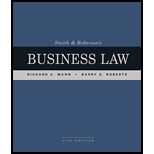
Smith and Roberson’s Business Law
17th Edition
ISBN: 9781337094757
Author: Richard A. Mann, Barry S. Roberts
Publisher: Cengage Learning
expand_more
expand_more
format_list_bulleted
Question
Chapter 9, Problem 12CP
Summary Introduction
To discuss: Whether W is entitled to recover anything.
Expert Solution & Answer
Want to see the full answer?
Check out a sample textbook solution
Students have asked these similar questions
Peter Andrus owned an apartment building that he had insured under a fire insurance policy sold by J.C. Durick Insurance (Durick). Two months prior to the expiration of the policy, Durick notified Andrus that the building should be insured for $48,000 (or 80 percent of the building’s value), as required by the insurance company. Andrus replied that (1) he wanted insurance to match the amount of the outstanding mortgage on the building (i.e., $24,000) and (2) if Durick could not sell this insurance, he would go elsewhere. Durick sent a new insurance policy in the face amount of $48,000 with the notation that the policy was automatically accepted unless Andrus notified him to the contrary. Andrus did not reply. However, he did not pay the premiums on the policy. Durick sued Andrus to recover these premiums.
Discuss who wins? Provide justification for your argument/position.
Parker, the owner of certain unimproved real estate in Chicago, employed Adams, a real estate agent, to sell the property for a price of $250,000 or more and agreed to pay Adams a commission of 6 percent for making a sale. Adams negotiated with Turner, who was interested in the property and willing to pay as much as $280,000 for it. Adams made an agreement with Turner that if Adams could obtain Parker’s signature to a contract to sell the property to Turner for $250,000, Turner would pay Adams a bonus of $10,000. Adams prepared and Parker and Turner signed a contract for the sale of the property to Turner for $250,000. Turner refuses to pay Adams the $10,000 as promised. Parker refuses to pay Adams the 6 percent commission. In an action by Adams against Parker and Turner, what judgment?
David E. Ross, his two brothers, and their families operated and owned the entire stock of five businesses. Ross had three children: Rod, David II, and Betsy. David II and Betsy were not involved in the operation of the companies, but Rod began working for one of the firms, Equitable Life and Casualty Insurance Company, in 2007. Between 2009 and 2013, the elder Ross informed a number of persons of his desire to reward Rod for his work with Equitable Life by giving him stock in addition to the stock he would inherit. He subsequently executed several stock transfers to Rod, representing shares in various family businesses, which were reflected by appropriate entries on the corporate books. Certificates were issued in Rod’s name and placed in an envelope identified with the name Rod Ross, but they were kept with the other family stock certificates in an office safe to which Rod did not have access. In all, one-fourth of the stock holdings of David E. Ross were transferred to Rod in this…
Chapter 9 Solutions
Smith and Roberson’s Business Law
Knowledge Booster
Similar questions
- Smith was approached by a man who introduced himself as Brown of Brown & Co. Brown was not known to Smith, but Smith asked Dun & Bradstreet for a credit report and obtained a very favorable report on Brown. He thereupon sold Brown some expensive gems and billed Brown & Co. “Brown” turned out to be a clever jewel thief, who later sold the gems to Brown & Co. for valuable consideration. Brown & Co. was unaware of “Brown’s” transaction with Smith. Can Smith successfully sue Brown & Co. for either the return of the gems or the price as billed to Brown & Co.?arrow_forwardDennis and Donna Smith owned a 10-acre tract of land that they decided to sell. The couple entered into a listing agreement with Kelly McLaughlin, a licensed real estate broker. The agreement gave Kelly the exclusive right to sell the property for a period of 6 months. The Smiths agreed to pay Kelly a 6% commission of the selling price if a buyer was found during the listing period. Four months later, the Smiths sent Kelly a letter terminating the listing agreement. Kelly did not approve of the conditions. One month later, Kelly presented a full price offer to the Smiths; however, they ignored the offer and sold the property to another buyer. Kelly sued the Smiths for breach of the agency agreement. Which party wins the lawsuit? Did the Smiths act ethically in this case?arrow_forwardWilson engages Ruth to sell Wilson’s antique walnut chest to Harold for $2,500. The next day, Ruth learns that Sandy is willing to pay $3,000 for Wilson’s chest. Ruth nevertheless sells the chest to Harold. Wilson then discovers these facts. What are Wilson’s rights, if any, against Ruth?arrow_forward
- In August, Victoria Air Conditioning, Inc. (VAC), entered into a subcontract for insulation services with Southwest Texas Mechanical Insulation Company (SWT), a partnership comprising Charlie Jupe and Tommy Nabors. In February of the following year, Jupe and Nabors dissolved the partnership, but VAC did not receive notice of the dissolution at that time. Sometime later, insulation was removed from Nabors’s premises to Jupe’s possession and Jupe continued the insulation project with VAC. From then on, Nabors had no more involvement with SWT. One month later, Nabors informed VAC’s project manager, Von Behrenfeld, that Nabors was no longer associated with SWT, had formed his own insulation company, and was interested in bidding on new jobs. Subsequently, SWT failed to perform the subcontract and Jupe could not be found. VAC brought suit for breach of contract against SWT, Jupe, and Nabors. Nabors claims that several letters and change orders introduced by both parties show that VAC knew…arrow_forwardJohnson, who owned a hardware store, was indebted to Hutchinson, one of her suppliers. Johnson sold her business to Lockhart, one of Johnson’s previous competitors, who combined the inventory from Johnson’s store with his own and moved them to a new, larger store. Hutchinson claims that Lockhart must pay Johnson’s debt because the sale of the business had been made without complying with the requirements of the bulk sales law. Discuss whether Lockhart is obligated to pay Hutchison’s debt to Johnson.arrow_forwardIn late 2013 or early 2014, the plaintiff, Lan England, agreed to sell 258,363 shares of stock to the defendant, Eugene Horbach, for $2.75 per share, for a total price of $710,498.25. Although the purchase money was to be paid in the first quarter of 2014, the defendant made periodic payments on the stock at least through September 2014. The parties met in May of 2015 to finalize the transaction. At this time, the plaintiff believed that the defendant owed at least $25,000 of the original purchase price. The defendant did not dispute that amount. The parties then reached a second agreement whereby the defendant agreed to pay to the plaintiff an additional $25,000 and to hold in trust 2 percent of the stock for the plaintiff. In return, the plaintiff agreed to transfer the stock and to forego his right to sue the defendant for breach of the original agreement. In December 2016, the plaintiff made a demand for the 2 percent stock, but the defendant refused, contending that the 2 percent…arrow_forward
- Mark Bradshaw, an agent for National Foundation Life Insurance Co. (NFLIC), tried to sell a health insurance policy to Bobby Reed. Bradshaw told Reed that his health insurance coverage would begin upon signing some forms and paying the first premium. On January 7, Reed signed but did not read the forms, which included language stating that Reed understood that Bradshaw could not change any NFLIC policy or make any policy effective, that the policy would not be effective until actually issued by NFLIC, and that it could take up to two weeks for Reed’s application to be processed and the policy issued. NFLIC received Reed’s application, including his payment for the first premium, on January 12. On January 19, NFLIC called Reed’s home and was informed he had a heart attack on January 15. NFLIC declined to issue the policy to Reed. On what grounds did Reed sue Bradshaw? Was Reed’s suit against Bradshaw successful?arrow_forwardMartha sells goods to James for $25,000. Martha assigns her right to receive the $25,000 to XYZ Finance James refuses to pay XYZ the $25,000. James makes two arguments for not paying. First James claims that XYZ has no privity of contract and that XYZ is not a third-party beneficiary of its contract with Martha. Second – James claims that the goods were worthless. Assume that the goods were worthless. You are the judge. Who wins and why? Address both arguments that James makes.arrow_forwardPeters paid Davis $1000 for carpeting which was installed in Peter's home on March 1, 1974. Peters immediately noticed a defect in the carpets and notified Davis. Davis's employees attempted several times to fix the carpets but were unsuccessful. On May 1, Peter wrote Davis and rejected the carpet demanding a full refund of the purchase price. Davis failed to remove the carpet. What will be the result?arrow_forward
- Anne Robertson obtained telescopes from the See-Well Optics Company at dealer prices on the pretense of being a dealer in optical equipment. See-Well later determined that Robertson was not, had never been, and did not plan to be a dealer in optics. By the time these facts emerged, Robertson had succeeded in selling the telescopes to several individuals located throughout the country. These buyers had responded to advertisements placed by Robertson, who again had represented herself as a dealer in optical equipment. The buyers had purchased the telescopes in good faith at prices consistent with comparable equipment. See-Well located these buyers and demanded that the telescopes be returned as property obtained through fraud. Do the buyers of these telescopes have to return their purchases?arrow_forwardAn agent is NOT personally liable on a contract made with a third party when: 1) neither the existence, nor the name of the principal is known to the third party. 2) the name and existence of the principal are known to the third party. 3) the agent makes the contract with the third party in his/her personal capacity as a co-signor or obligor with the principal. 4) the existence, but not the name of the principal is known to the third party.arrow_forwardRafferty was the principal shareholder in Continental Corporation, and, as a result, he received the lion’s share of Continental’s dividends. Continental Corporation was eager to close an important deal for iron ore products to use in its business. A written contract was on the desk of Stage Corporation for the sale of the iron ore to Continental. Stage Corporation, however, was cautious about signing the contract; and it did not sign until Rafferty called Stage Corporation on the telephone and stated that if Continental Corporation did not pay for the ore, he would. Business reversals struck Continental Corporation, and it failed. Stage Corporation sues Rafferty. What defense, if any, has Rafferty?arrow_forward
arrow_back_ios
SEE MORE QUESTIONS
arrow_forward_ios
Recommended textbooks for you
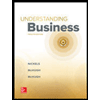 Understanding BusinessManagementISBN:9781259929434Author:William NickelsPublisher:McGraw-Hill Education
Understanding BusinessManagementISBN:9781259929434Author:William NickelsPublisher:McGraw-Hill Education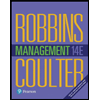 Management (14th Edition)ManagementISBN:9780134527604Author:Stephen P. Robbins, Mary A. CoulterPublisher:PEARSON
Management (14th Edition)ManagementISBN:9780134527604Author:Stephen P. Robbins, Mary A. CoulterPublisher:PEARSON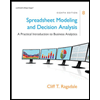 Spreadsheet Modeling & Decision Analysis: A Pract...ManagementISBN:9781305947412Author:Cliff RagsdalePublisher:Cengage Learning
Spreadsheet Modeling & Decision Analysis: A Pract...ManagementISBN:9781305947412Author:Cliff RagsdalePublisher:Cengage Learning Management Information Systems: Managing The Digi...ManagementISBN:9780135191798Author:Kenneth C. Laudon, Jane P. LaudonPublisher:PEARSON
Management Information Systems: Managing The Digi...ManagementISBN:9780135191798Author:Kenneth C. Laudon, Jane P. LaudonPublisher:PEARSON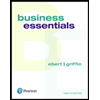 Business Essentials (12th Edition) (What's New in...ManagementISBN:9780134728391Author:Ronald J. Ebert, Ricky W. GriffinPublisher:PEARSON
Business Essentials (12th Edition) (What's New in...ManagementISBN:9780134728391Author:Ronald J. Ebert, Ricky W. GriffinPublisher:PEARSON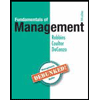 Fundamentals of Management (10th Edition)ManagementISBN:9780134237473Author:Stephen P. Robbins, Mary A. Coulter, David A. De CenzoPublisher:PEARSON
Fundamentals of Management (10th Edition)ManagementISBN:9780134237473Author:Stephen P. Robbins, Mary A. Coulter, David A. De CenzoPublisher:PEARSON

Understanding Business
Management
ISBN:9781259929434
Author:William Nickels
Publisher:McGraw-Hill Education

Management (14th Edition)
Management
ISBN:9780134527604
Author:Stephen P. Robbins, Mary A. Coulter
Publisher:PEARSON

Spreadsheet Modeling & Decision Analysis: A Pract...
Management
ISBN:9781305947412
Author:Cliff Ragsdale
Publisher:Cengage Learning

Management Information Systems: Managing The Digi...
Management
ISBN:9780135191798
Author:Kenneth C. Laudon, Jane P. Laudon
Publisher:PEARSON

Business Essentials (12th Edition) (What's New in...
Management
ISBN:9780134728391
Author:Ronald J. Ebert, Ricky W. Griffin
Publisher:PEARSON

Fundamentals of Management (10th Edition)
Management
ISBN:9780134237473
Author:Stephen P. Robbins, Mary A. Coulter, David A. De Cenzo
Publisher:PEARSON